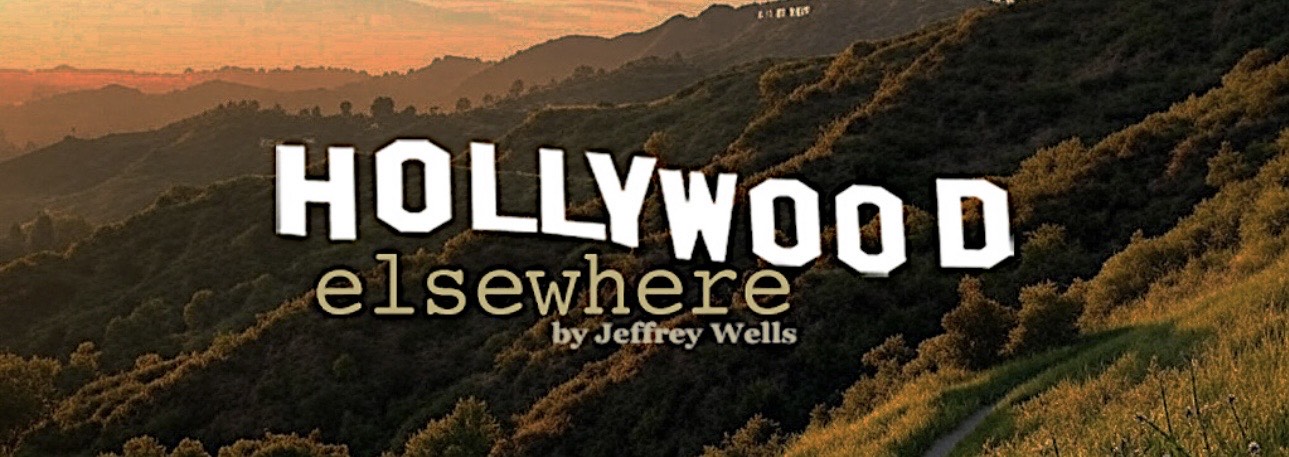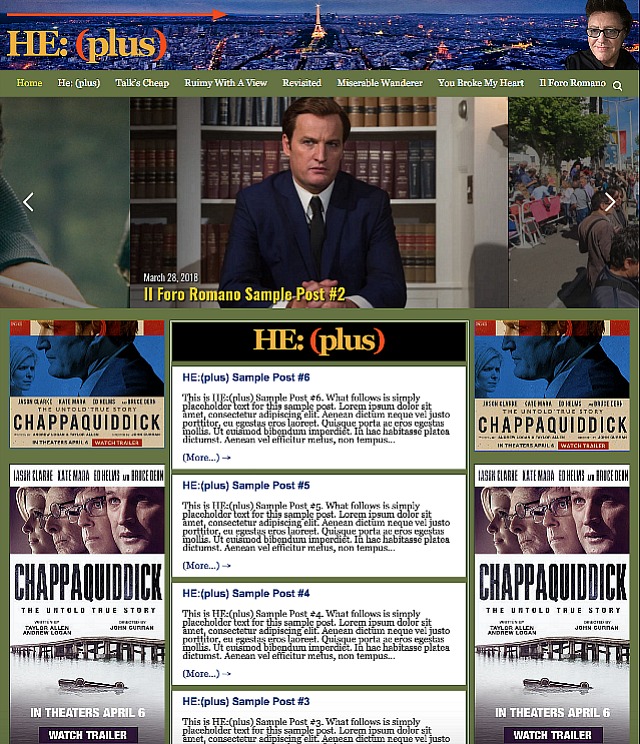I’ve mentioned before that my first viewing of George Lucas‘s THX-1138 happened during a 24-hour FILMEX sci-fi marathon, which happened in ’74 or ’75. The screening began around 4 or 4:30 am. I remember getting up at 3 or 3:15 am and driving over to Century City Plitt theatres in the dark. There’s nothing quite as pulverizing as watching a sci-fi film at 4:30 am, your system just starting to feel revved with that first jolt of caffeine. I’ve never forgotten that computer greeting Robert Duvall hears with each and every log-on — “what’s wrong?” I say this to my cats when they want something. They look at me and I say “what’s wrong?”, in that exact same computer voice.
Son of Latvian Prince
Woody Allen‘s Play It Again, Sam opened at the Broadhurst theatre on 2.12.69 and ran for just over a year, closing on 3.14.70. Directed by Joseph Hardy, the cast included Allen as Allan Felix, Diane Keaton as Linda Christie, Tony Roberts as Dick Christie and Jerry Lacy as the ghost of Humphrey Bogart. Allen left the show near the end of its run and was replaced by Bob Denver. It was while auditioning for the play that Keaton first met Allen; they became romantically involved but broke up after a year. The biography [below] is from the Play it Again, Sam copy of Playbill.
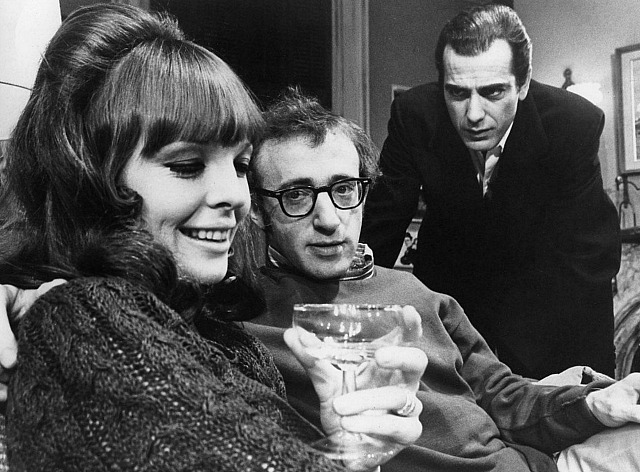
(l. to r.) Diane Keaton, Woody Allen, Jerry Lacy.
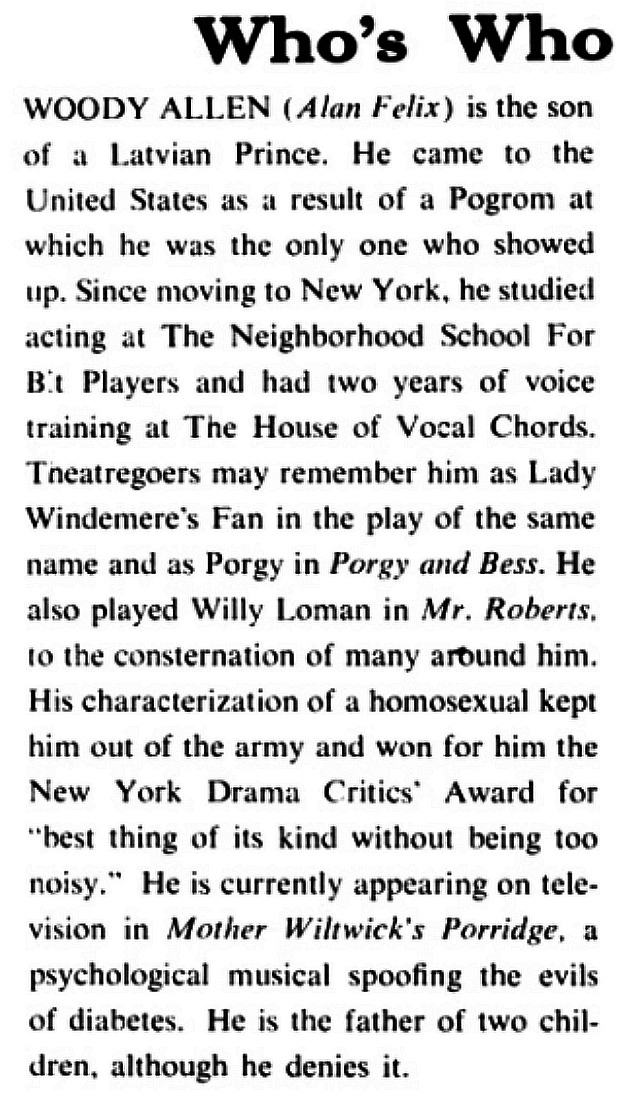
Quiet But Permanent Expulsion
I regret to say that Garry Shandling told several penis jokes in his day, and every last one of them makes me cringe. Because of that godawful word, I mean. I’ve said this once or twice before but I really and truly want to see that icky and contemptible term retired, and that includes being removed from each and every English dictionary, dead-tree or online. I make a face each and every time I hear it because it assigns or associates the menial and moderately offensive task of waste disposal to an organ that is primarily about love and rapture and hormonal mountain-climbing, not to mention shouldering a metaphor for the primal love of life. The substitute terms are schlong, junk, Johnson or schtufenhaufer. I mean it. There are dozens if not hundreds of words that have become obsolete due to not being used — zounds, sweetmeats, smite, fourscore, etc. I’m merely talking about adding another to the list.
Reminder
Ex-wife: Did you watch the Garry Shandling HBO special [i.e., The Zen Diaries of Garry Shandling]?
Me: Been meaning to….the four and a half hour length has been giving me pause….why?
Ex-wife: Really moving.
Me: Okay, I’ll watch it tonight. Of half tonight and half tomorrow or something. Moving how? What was the big moment?
Ex-wife: He never recovered from the death of his brother when he was a kid.
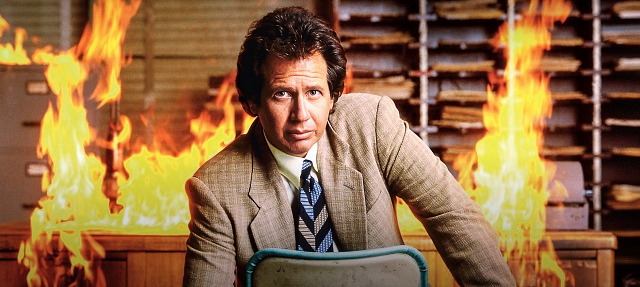
Easter Blip on Radar Screen
Easter means nothing to me. Not since I turned 14 or 15. Okay, maybe when the kids were young in the early ’90s and we all went on a couple of easter egg hunts. But don’t even think of pulling that shit now.
If I’m so inclined there’s one way to bring it all back, to revisit that time in my life when Easter service at our local Episcopal church and Palm Sunday and chocolate rabbits were actually “things” of some value, and that’s listening to Miklos Rozsa‘s Biblical film scores. I’ve said this three or four times since HE launched, but when orgiastic, big-screen, reach-for-the-heavens emotion was called for, no one did it better. He may have been first and foremost a craftsman, but Rozsa really had soul.
Posted 15 years ago: “Listen to the overture and main title music of King of Kings, and all kinds of haunting associations and recollections about the life of Yeshua and his New Testament teachings (or at the least, grandiose Hollywood movies about same) start swirling around in your head. And then watch that Nicholas Ray‘s stiff, strangely constipated film (which Rozsa described in his autobiography as ‘nonsensical Biblical ghoulash’) and ask yourself if Rozsa didn’t capture the spiritual essence of Christ’s story better than what Ray, screenwriter Phillip Yordan and producer Samuel Bronston managed to throw together.
“I don’t know if it’s commonly known, but the “buhhhm-ba-dum-dum” theme from Jack Webb‘s Dragnet TV series was taken from Roza’s score for The Killers. Here’s Rozsa’s bum-da-dum-dum in the opening credits for that 1946 noir classic.
Motorboating
Last night Tatyana and I watched David Dobkin‘s Wedding Crashers. Third time for me, but the last time was the late summer of ’05 — almost 13 years ago. All butter and gravy. Hardly any diminishment except for one scene. Dobkin’s comic emphasis was utterly brilliant in this film — lightning in a bottle. And since ’05, he hasn’t exactly been channelling the right stuff. He directed Fred Claus (’07), The Change-Up (’11) and The Judge (’13) + produced a lot of films.
Wedding Crashers lasts two hours (usually but not always about 10 minutes too long for a comedy), and it almost never sacrifices story tension. And the money! It did $209,255,921 domestic and $76 million foreign for a worldwide tally of $285,176,741.
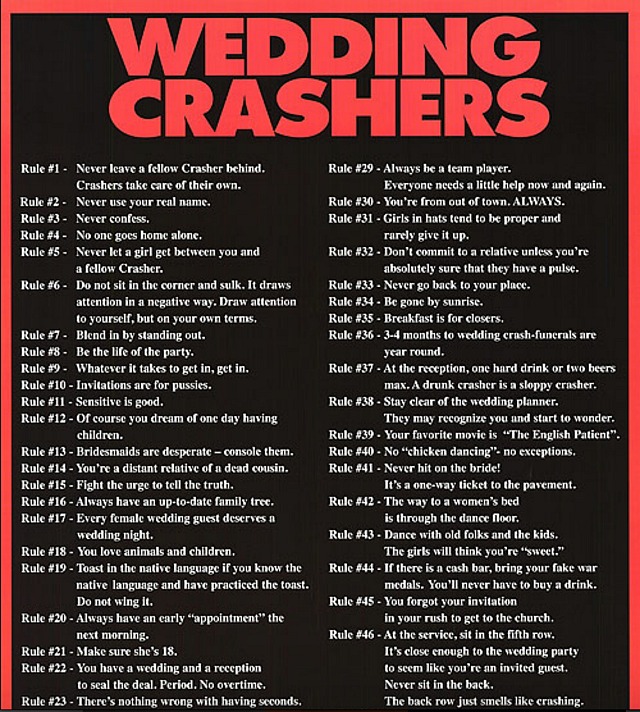
Owen Wilson (36 during filming, turning 50 on 11.18.18) looks incredibly young, and Vince Vaughn…well, nobody ever gave a funnier big-screen performance, and I’m including Seth Rogen, Jim Carrey, Buster Keaton, Groucho Marx, Harold Lloyd and Bob Hope in his 1950s heyday. Bradley Cooper hadn’t even happened at that point, and I’d forgotten about “motorboating.”
Read this 6.23.17 Tim Grierson recap piece (“The Oral History of Wedding Crashers, or: How does it feel having worked on this generation’s Animal House?”).
The diminishment comes with the attempted nocturnal gay-rape scene between Vaughn and Keir O’Donnell. Nowadays a scene like this would never even be considered in the script stage, much less shot and included in the final cut. Remember how Vaughn got in trouble back in 2010 for saying “gay electric cars” in Ron Howard‘s The Dilemma, and how the scene had to be removed?
No Accounting For Taste
Yesterday Indiewire‘s Kate Erbland devoted one of her “Girl Talk” columns to a piece about the retired-until-further-notice Cameron Diaz. It was basically a career-summary piece along the lines of what I wrote on 3.15. What blows my mind is that Erbland (a) considers Roger Kumble‘s The Sweetest Thing to be one of Diaz’s most engaging films, despite being one of the most inane piece-of-shit comedies I ever walked out on with a 26% Rotten Tomatoes rating, and (b) she completely ignored what I regard as her best film, Curtis Hanson‘s In Her Shoes, in which she gave her career-best performance. Erbland obviously doesn’t have to agree with me, but she didn’t even mention the Hanson, which has an RT rating of 75%.
Right Kind of Vibe
Last night Tatyana and I dropped by Angelini Osteria (7313 Beverly Blvd., just west of Poinsettia). No reservation but they sat us immediately at the rear counter. The food, as always, was perfect. Sitting right next to us was Lena Waithe, 33 year-old co-writer and actor in Netflix’s Master Of None, the creative force behind Showtime’s The Chi, a costar in Steven Spielberg‘s Ready Player One, and currently on the cover of Vanity Fair. (Here’s Jacqueline Woodson‘s cover story.) Waithe — friendly in a no-big-deal way — was eating with her fiance, Alana Mayo. Sitting behind us was producer Steve Golin (The Revenant, Spotlight), whom I last ran into at the 2015 Middleburgh Film Festival.


Waithe and Mayo were sitting at the right side of the rear counter; Tatyana and I were seated to the left.
Backyard Murder
I’m way late on this, I realize, but the blame for the 3.18 death of Stephon Clark is squarely on the two Sacramento cops who fired 20 shots at the poor guy. Clark was hit with eight slugs, six in the back. Once again, a city howls in rage over a police force that seems all too willing to shoot to kill when there’s a black suspect who seems to be carrying something. Clearly a terrible, tragic situation. And it seems to keep happening.
That said, can I ask a typical-white-guy question? If you look at the video Clark is obviously acting like a guy who doesn’t want to be apprehended, and so he’s running away and hopping over a fence and scampering around. Why is he running? We all know that your average big-city cop is more than willing to shoot first and ask questions later, so why would a young black male try to outrun the law when the cops are near with guns drawn? Because he’s thinks he’s Jason Bourne and he can somehow get away, right? But we all know how these situations have often turned out. It’s horrible and malicious, but that’s how cops are so where’s the sense in running for it? I would drop to my knees and put my hands behind my head…period. No cell phone, no TV remote, no nothin’.
Posted on 8.14.14, during the Ferguson riots: “Leaving aside the present ugliness, no one should misunderstand a simple fact about cops, which is that they deal with the worst aspects of human nature 24/7 and that the only way to deal with them when they’re angry and barking some kind of order is to chill and obey. Don’t run or argue or flip the bird or jump a fence. Just give in and mildly submit and that’ll be the end of it. The key is to make them feel placated so they’ll move on. You will always make it worse if you run or give them any kind of shit. Some people can’t seem to understand this.”
A guy answered me as follows: “In my opinion, situations like this call for us to be advocates and allies to marginalized people. To listen and empathize, not to tell them what they ought to do, let alone tell them something that they likely already know.
Starting To Look Like Something
The great Dominic Eardley and I have been futzing around with the flavor and ornamention of the new HE:(plus) design. A friend urged me to make HE:(plus) look different and distinct from HE classic. So I decided to substitute the Hollywood hills backdrop for one of Paris…Hollywood Elsewhere, right? And then stealing Francis Bacon’s occasional use of arrows in some of his paintings, except make the arrows red and pointy and very, very narrow. I also decided to change the content area background from medium gray to olive drab, and the background area from dark gray to mineshaft black.
The other HE:(plus) columns besides my stuff (Ruimy With A View, Il Foro Romano, Miserable Wanderer, etc.) will line up below. The individual logos for each column are being designed as we speak by HE’s own Mark Frenden. This is not the end-all and be-all of HE:(plus) design, of course, but a beginning. If anyone has any suggestions or improvements, please share. Again, the basic layout so far.
Beasts So Fierce
In lieu of Wendy, a revisiting of my 2012 Sundance impressions of Benh Zeitlin‘s Beasts of The Southern Wild (“Rank, Robust, Ecstatic“), posted almost six years ago:
The passionately praised Beasts of the Southern Wild, which I finally saw last night at Park City’s MARC, is everything its admirers have said it is. It’s a poetic, organic, at times ecstatic capturing of a hallucinatory Louisiana neverland called the Bathtub, down in the delta lowlands and swarming with all manner of life and aromas, and a community of scrappy, hand-to-mouth fringe-dwellers, hunters, jungle-tribe survivors, animal-eaters and relentless alcohol-guzzlers who live there.
It’s something to sink into and take a bath in on any number of dream-like, atmospheric levels, and a film you can smell and taste and feel like few others I can think of.
Directed and co-written by Benh Zeitlin, Beasts is much more of a naturalistic object d’art than a narrative-driven drama, at least as most of us define that term. The emphasis is on sensual naturalism-wallowing — lush, grassy, muddy, oozy, leafy, stinky, primeval, non-hygenic, slithery, watery, ants up your ass — with a few story shards linked together like paper clips.
The narrative, as such, focuses on six-year-old Hushpuppy (Quvenzhane Wallis) and her father Wink (Dwight Henry) and a third-act search for Hushpuppy’s mother.
Wallis is a hugely appealing young actress — beautiful, spirited, wide-eyed — and she pretty much carries the human-soul portions of the film. But Henry’s dad, who cares for Hushpuppy in his own callous and bullying way, is a brute and a drunk and mostly a drag to be around, and after the fifth or sixth scene in which he’s raging and yelling and guzzling booze, there’s a voice inside that starts saying “I don’t know how much more of this asshole I can take.”
Here comes the part of the review that the keepers of the precious Sundance flame are going to dislike. If you apply the classic Jim Hoberman “brief vacations” concept of a great film not only being a kind of “sacred text” but constituting a realm that a viewer would be happy to literally take up residence within, Beasts of the Southern Wild does not, for me, pass the test.
Wells to Zeitlin…Howzit Goin’?
Roughly two years after the big Sundance debut of Beasts of the Southern Wild, or in December 2013, I wrote director-writer Benh Zeitlin about what I’d heard was his next project. It was called Wendy, I’d been told by a friend, and was thought to be some kind of rural-American, loose-shoe reimagining of the Peter Pan saga. Or something in that vein. So I wrote Zeitlin and asked what up.
“I’m looking to verify that your followup to Beasts of the Southern Wild will be some kind of variation on the Peter Pan legend, called Wendy,” I said. “Which will basically be the classic story told from Wendy’s point of view. A similar kind of organically magical other-world vibe that you delivered in Beasts, I gather, but within a more familiar structure.”
In his emailed reply, Zeitlin said what I’d been hearing was almost 100% wrong, and that the vision of the film had changed every which way. He asked me to keep it zipped until he knew what it finally would be and was ready to share. I said fine and that was that.

Wendy director-writer Benh Zeitlin.
4 1/3 years have passed since that exchange, and Zeitlin’s Wendy is finally done, having shot last year in Montserrat and Antigua, and currently in post. And ready to roll out in the fall, I’m presuming, under Fox Searchlight. Or maybe not. I wrote Zeitlin earlier today to ask how thing’s are going…silencio.
Wendy‘s IMDB page offers the following synopsis: “A young girl is taken to a destructive ecosystem where she befriends a young boy and discovers a mystical pollen that allows them to break the relationship between aging and time.” That sounds kinda Peter Pan-ny, no?
Wendy is played by the very young Tommie Lynn Milazzo, who may be the new Quvenzhane Wallis mixed with a slightly younger sister of The Florida Project‘s Brooklyn Prince. Shay Walker plays Angela Darling, the IMDB says. Darling, of course, was the last name of the London family that Peter Pan visited in the original 1906 J.M. Barrie novel, “Peter Pan in Kensington Gardens.”
I have it in my mind that Zeitlin is temperamentally the new Terrence Malick, and that he likes to take his time in the editing room. I’m figuring nonetheless that Wendy will probably screen in Venice, Telluride and/or Toronto.
